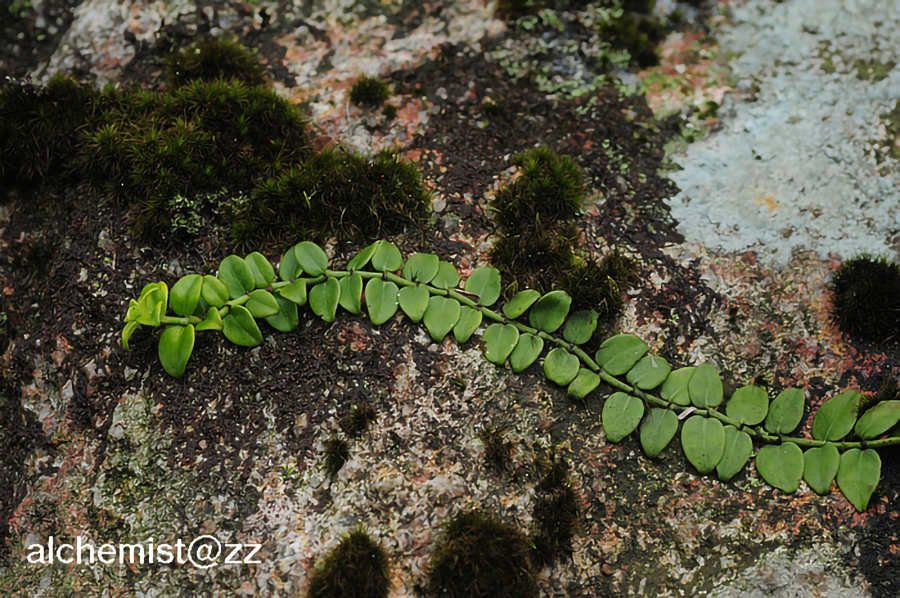- Scientific Name: Psychotria serpens Linnaeus
- Ref: Mant. Pl. 2: 204. 1771.
- Chinese Common Name: 蔓九节 mànjiǔjié
- Family: Rubiaceae
- Genus: Psychotria
- Distribution: Thickets or forests in ravines, mountains, hills, flat lands; below 100-1400 m. Fujian, Guangdong, Guangxi, Hainan, Taiwan, Zhejiang [Cambodia, Japan, N Korea, Laos, Thailand, Vietnam].
Climbing or creeping vines or lianas, to 6 m or more, rather fleshy, juvenile stems appressed to substrate with adventitious roots, reproductive stems spreading at apex; stems glabrous. Petiole 1-10 mm, glabrous; leaf blade drying papery to leathery, pale green, dark reddish green, reddish brown, or dark brown, often paler below, ovate or obovate on juvenile stems and elliptic, elliptic-oblong, lanceolate, oblanceolate, or obovate-oblong on reproductive stems, 0.7-9 × 0.5-3.8 cm, glabrous, base acute to obtuse, margins plane or sometimes thinly revolute, apex acute, obtuse, or sharply acuminate; secondary veins not visible or 3-10 pairs, not forming a submarginal vein, without domatia; stipules caducous, triangular to ovate, interpetiolar or shortly united around stem, 2-3 mm, glabrous, acute to rounded. Inflorescences terminal, cymose, glabrous to puberulent, few to many flowered, branched for 3-5 orders, pedunculate; peduncle 0.5-3 cm; branched portion corymbiform, 1-5 × 1-5.5(-10) cm; bracts subtending secondary axes 1-2 mm and triangular or often leaflike and 3-6 mm, those subtending pedicels triangular, 0.2-1.5 mm; pedicels 0.5-1.5 mm. Flowers pedicellate. Calyx glabrous to puberulent; hypanthium portion obconic, 0.8-1 mm; limb flared, 0.5-1 mm, partially lobed; lobes triangular, ca. 0.5 mm. Corolla white, funnelform, outside glabrous to usually puberulent; tube 1.5-3 mm, in throat densely villous; lobes ligulate-oblong, 1.5-2.5 mm. Drupes white, subglobose or ellipsoid, 4-7 × 2.5-6 mm, with pedicels to 5 mm; pyrenes shallowly 4- or 5-ribbed. Fl. Apr-Jun, fr. year-round. (Flora of China)
